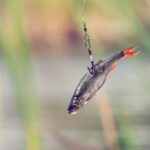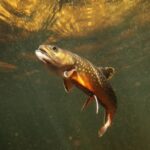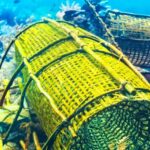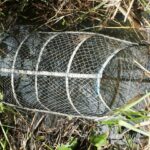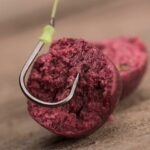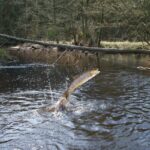There are a number of myths surrounding bottom feeders, such as that they aren’t easy to catch by anglers or they are not edible. However, it is important to note that these are often simply myths.
In addition, most people know which fish species are defined as bottom feeders.

In this ultimate guide on bottom feeder fish, we take a look at what fish species are counted as bottom feeders, and how you can identify them.
What Are Bottom Feeder Fish?
Bottom feeding fish are those that feed on the bottom of a body of water, such as lakes or ponds. They have small mouths and large stomachs to help them digest their food.
Bottom feeder fish can be divided into saltwater species, such as eel, flounder and rays, and freshwater fish, such as bass and catfish.
Despite their name, bottom feeders are not only fish but you will find that the majority of marine animals living at the bottom of a body of water are bottom feeders.
This includes snails, crabs, starfish and shellfish.
In addition, there is a second distinction which divides bottom feeders into fish that only eat from the bottom and those species that eat from all layers within the water.
You will also find that the majority of exclusive bottom feeder species eat mostly dead organic material when feeding.
For those species that feed from different layers of the water, they eat a variety of foods, including plankton and smaller fish.
How To Identify Bottom Feeding Fish
There are many ways in which you can tell if a fish is a bottom feeder. Here are some of the most important signs.
The Animal’s Mouth
One way is by looking at its mouth. If the mouth looks like a sucker, then it is likely to be a bottom feeder. This mouth shape allows the fish to easily suck up food from the bottom of a lake or pond.
The majority of bottom feeders have small, sharp teeth that allow them to crack open the shell of crabs and other crustaceans that live at the bottom of a lake.
However, the size of teeth for bottom feeder fish species can vary widely depending on whether they are exclusive bottom feeders or they also eat in other layers of the water.
The Body Shape
Another way to identify bottom feeders is by examining their body shape. For example, flat-body bottom feeders tend to be found near the bottom of a lake, whereas round-bodied bottom feeders prefer to stay in deeper waters.
The bottom feeders that exclusively feed at the bottom of a body of water typically have a flat body shape. This includes a number of different flatfish species, such as flounders.
This body shape is ideal for eating the soft bodies of invertebrates that live at the bottom.
Other types of bottom feeders include the round-bodied ones, which include bass and catfish. These fish have more rounded bodies with longer tails than flat-bodied bottom feeders.
Their long tail helps them move around the bottom of a lake and pick up food from the mud.
Their Prey
Bottom feeder fish species are either omnivores or detritivores (eating dead organisms) or both.
Omnivorous fish eat a wide range of foods, including plants, worms, mollusks, algae, and decaying matter.
Detritivores feed mainly on dead plants and animal matter.
Although you cannot identify a bottom feeder exclusively based on their prey, it’s good to know that the majority of bottom feeders are detritivores.
Size
Finally, another way to identify bottom feeder fish is by measuring their length. Most bottom feeder fish species are relatively small, although some individual feeder fish species, such as catfish, can get slightly larger.
It is best to look for the average size of your local bottom feeder fish population.
Why Are Bottom Feeder Fish Important For The Environment?
Bottom feeder fish are an essential part of the ecosystem because they help keep the water environment clean. They play a vital role in keeping the bottom of lakes and ponds healthy by eating dead organisms and decaying material.
This helps control the sensitive balance of water quality in a lake, pond or even in an aquarium tank.
Bottom Feeder Fish Species
There are several common species of bottom feeder fish. As mentioned above, you can categorize this species of fish in a number of different ways.
We have chosen to take the easiest classification for anglers and hobby aquarists. This is the division by saltwater and freshwater bottom feeders.
Saltwater Bottom Feeder Fish
There is a great variety of bottom feeders living in saltwater across the globe. However, not all of the fish in the list below are exclusive bottom feeders.
Some of these fish species also feed in other layers of the ocean.
Eel
The majority of different eels species are bottom feeders. Eels are one of the most popular bottom feeder fish species.
They are very active predators and will often hunt down smaller fish and crustaceans.
They are known to eat almost anything, including insects, snails, crabs, shrimp, clams, and even jellyfish.
Eels are found throughout the world, but the largest populations are located in Asia and Africa. The most popular eel species amongst fishing experts and anglers is the European Conger.
This eel species is also the largest and heaviest. Although their size varies, all eel species have a very similar lifestyle.
These fish typically live near the coast or in shallow waters where they can feed from organisms and organic material in the mud, sand and under rocks.
However, some eels can also live in extremely deep parts of the ocean. One famous example of a deep sea eel is the Gulper eel.
The bodies of all eels are long and slender. Their heads are large and their mouths have long, sharp teeth.
Their eyes are usually located at the front end of their head. These feeder fish are carnivores and prefer to eat other fish and invertebrates.
Eels are nocturnal so they tend to be more active during the night than during the day.
Rays
Rays are another group of bottom feeder fish that are commonly seen around the world. There are over 100 different types of rays.
The most famous rays often shown in documentaries or movies are stingrays and manta rays.
Although some rays do not exclusively feed at the bottom of the ocean, even spotted rays like the Atlantic Spotted Ray are considered bottom feeders.
All rays have flat bodies with large pectoral fins and gills on the side of their body. They have large mouths with rows of sharp teeth.
These are ideal to feed on clams and oysters, as well as other small fish. However, rays do also feed on plankton.
The body of most rays is dark on the top with a light underside. This makes them almost invisible to predators that prey on rays.
On the other hand, many rays dig just under the muddy surface of the bottom of the ocean. This does not only help them to hide from predators, but they can also surprise their prey easier.
Most of them are harmless and pose little danger to humans. However, some ray species are best left untouched.
One of these species is the stingray which has a venomous spine in its tail. If you get stung by this type of ray, it could cause severe pain and swelling.
Rays are very closely related to sharks. This means that their skin is very coarse, and when touching rays, you will need to do so with gloves or a net.
It’s also good to bear in mind that, although rays do glide quietly along in the water, these animals are very powerful.
This means that if you plan to catch a ray, it’s essential not to underestimate its strength.
In addition, a lot of ray species are now endangered and may be specifically protected in your fishing area.
Please check whether you’re allowed to catch these species before going out into the water.
Sharks
There are hundreds of shark species in the world. Some of them are very dangerous while others are completely harmless.
Bottom feeder sharks, such as the angel shark, typically feed on crustaceans, snails, and small fish. Similar to rays, these sharks dig into the sand and catch their prey by surprise.
However, unlike rays, they are usually well adapted to the color of the sand.
They are therefore much harder to spot. The only way to find one of these sharks is to look carefully for their tracks in the sand.
As mentioned, sharks have sharp, spiky skin which means you will need to catch them with a fishing net. However, bear in mind that the majority of shark species, including bottom feeders sharks, are endangered and protected.
Cod
Cod is an important food source for people all over the world. It’s found in cold waters all over the globe.
They are particularly common off the coasts of New Zealand, Canada, Iceland, Norway, and Greenland.
There are two main species of cod: Pacific cod and Atlantic cod. Both species eat a range of small fish species, as well as invertebrates and lobsters.
Atlantic cod lives in cold water and its color varies from brown to grayish green depending on the water depth where it lives.
Cod is a very popular fish with anglers. It weighs just around 10 kg, and it’s ideal for cooking fish.
Although the bodies of both cod species are not flat, Atlantic cod feeds at the bottom of the ocean where temperatures can drop to as low as six degrees Celsius.
On the other hand, Pacific cod enjoys warmer climates, and it can be typically found in areas of the Western and Eastern Pacific.
Flounder
Flounder is another popular fish for anglers. It’s often caught using bait. Flounders can grow up to 95 cm long and weigh between 1-3 kg.
Young flounders are born as normal-looking fish with one eye on both sides of their head. As they grow and mature, their body shape changes into a flat form, moving one eye to sit next to the other.
These fish are commonly found in shallow coastal waters. They are most active during the day.
Flounders are quite versatile when it comes to eating. They can eat a variety of foods including crabs, shrimp, clams, squid, and even worms.
When catching flounder, make sure to use a light rod and reel to avoid breaking the delicate bones.
Flounder species, similar to halibut, are all bottom feeders, and they usually eat shrimp when fully grown. However, young flounders prefer crustaceans and spawn.
Snapper
Snappers are native to tropical oceans, but they can be found in temperate waters too.
Similar to many other fish, snapper are omnivores. They eat a wide variety of different types of seafood, including octopus, squid, small fish, and mollusks.
There is a large variety of snapper species, including the mutton snapper, mangrove snapper, and Northern red snapper.
Snapper bottom-feeding species have strong bodies with thin, sharp teeth.
Like other bottom feeders, snapper also likes to hide in holes or crevices. Some species spend time hiding under rocks or coral reefs.
To catch snapper, you’ll need a light rod and reel. Make sure to use a heavy line so you don’t break any of the fragile bones.
Halibut
Halibut is a type of flatfish. Its name comes from the Greek word “halia” meaning sea. Halibut is a very popular fish among fishermen because it has a high meat content.
There are a couple of important halibut species, including the Atlantic halibut and the Pacific halibut.
The Atlantic halibut is one of the biggest flatfish species which are bottom feeders that eat exclusively from the bottom of the ocean.
Their typical diet contains a range of other aquatic animals such as crabs, shrimps, eels, and prawns.
Atlantic halibut are heavy fish. They can weigh as much as 200 kg. You can identify a halibut by its white underside and the dark brown side at the top.
Similar to flounders, a halibut’s eyes are both on one side of the head.
Grouper
Grouper is another popular fish for fishing. Grouper is a group of fish that includes the black grouper, yellowfin grouper, and others.
These bottom feeders can weigh as much as 400 kg which means that they can be a challenge to catch.
They are known for being aggressive and territorial. When hooked, these fish will fight hard to get away.
Although their appearance can vary, the majority of groupers do not have any teeth. They typically feed on other fish, crustaceans, and octopuses.
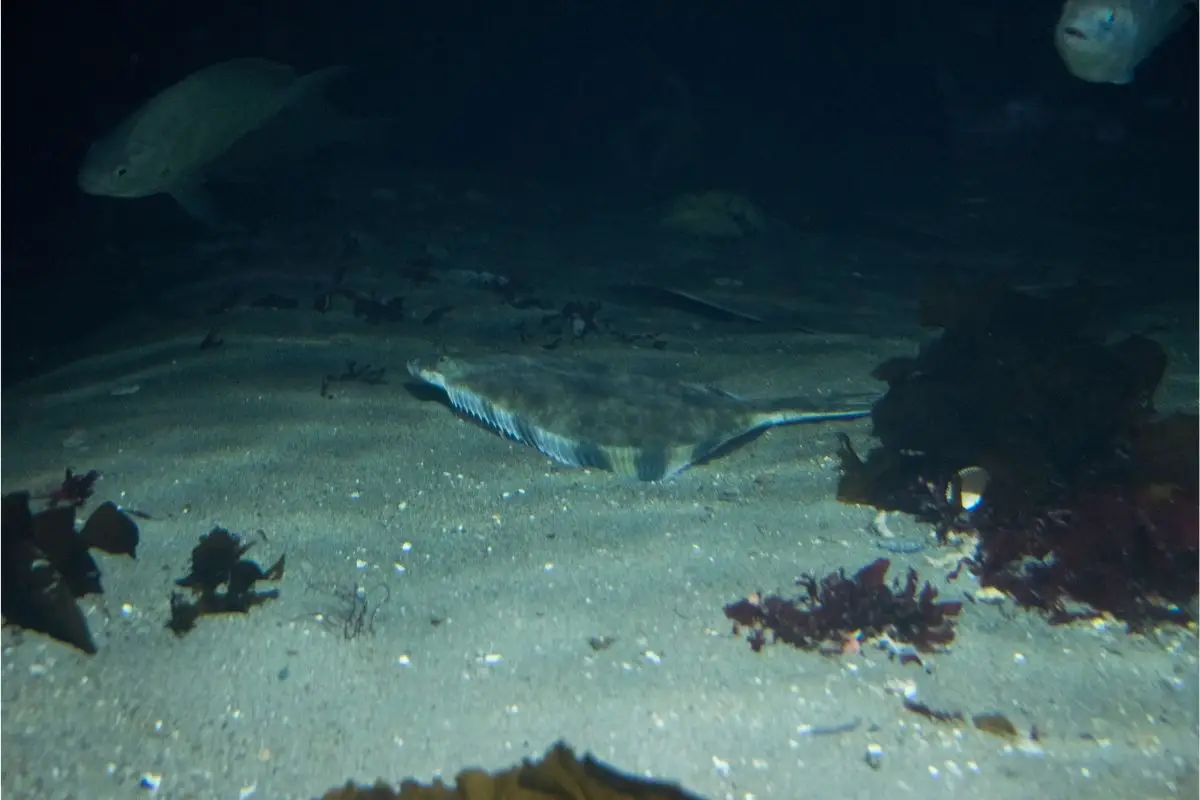
Freshwater Bottom Feeder Fish
Many freshwater fish species are bottom feeders, although some are more specialized than others. The majority of the following fish species are not exclusively feeding at the bottom of a lake.
Let’s take a look at the most popular freshwater bottom feeders fish.
Carp
Carp is a common bottom-feeding fish that feeds on plants, insects, larvae, and algae. This makes carp one of the favorite fish for anglers, as well as pond and aquarium owners.
There are numerous popular carp species, such as the common carp, black carp, silver carp or bighead carp.
Catfish
Catfish are bottom-feeders that prefer to stay near the bottom of the water column. Catfish are some of the most popular freshwater fish.
This is because catfish are easy to catch, and they also make for a delicious dinner. They’re also good for catching larger fish.
You can find catfish in many different sizes ranging from small to giant varieties. Some of the catfish favored by anglers are the Wels catfish, channel catfish, flathead catfish, and blue catfish.
As bottom-feeding fish, catfish eat almost everything that ends up on the bottom of the water. However, they also roam areas in the middle of the top layers of water.
Bass
Bass are bottom-feeding fish that live in shallow waters. Bass are often found in lakes, ponds, rivers, streams, and even reservoirs.
Like all other bottom feeder species, bass is predatory fish with sharp teeth. Their primary food source consists of insects, worms, crustaceans, and plankton, as well as small fish such as minnows.
When you want to catch bass, it helps if you know how to locate them. If you don’t know where they are hiding, then you might end up wasting your time.
Bass is best caught near the bottom of a lake or a river.
Can You Eat Bottom Feeder Fish?
This depends on the species of a bottom feeder. Particularly some saltwater bottom feeders, such as rays and sharks, are protected and should not be eaten.
However, the majority of freshwater river and lake bottom feeders are safe to eat.
Many anglers believe that bottom feeders only consume dead material which may lead to contamination in the fish. However, this is not true!
Not all bottom feeders scavenge. For example, catfish feed on live prey and they are a very popular bottom feeder species caught by anglers.
However, all of the freshwater fish and the majority of the saltwater fish on our list above are perfectly safe to eat.
And the best thing is that they are delicious, too.
Can Bottom Feeder Fish Live In An Aquarium Tank?
Yes, some bottom feeder fish can live happily in an aquarium tank. However, these fish will need special care when placed into a tank.
A lot of bottom-feeder fish are used to keep the bottom of the tank clean from rotting, organic material. In addition, bottom feeders usually also remove a large number of algae from the aquarium’s glass.
This does not only improve the look of your tank but it also helps improve the oxygen levels in the water.
This is a much more natural solution than frequent water changes or using chemicals.
Conclusion
Bottom feeder fish are not just great additions to any aquarium or pond but they are also firm favorites with anglers.
Although not all bottom feeders are ideal for an easy fishing trip, the majority of bottom-feeding fish, such as cod and bass, are easy to catch.
- Do You Need An Indicator For Nymph Fishing? - November 16, 2023
- Fishing Safety Tips For Families - September 25, 2023
- What Is The Best Time To Night Fish At A Lake? - September 18, 2023


